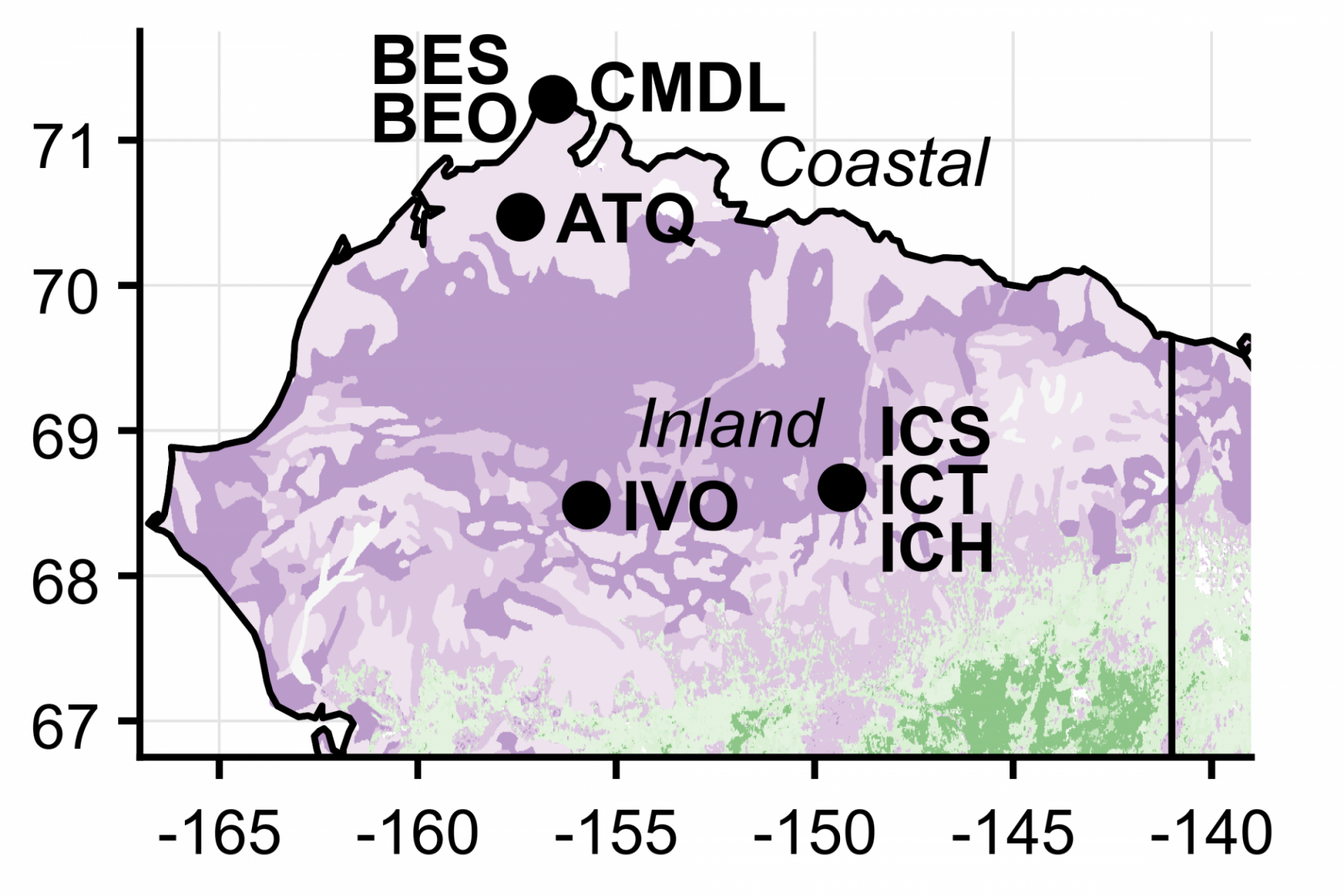The Tundra Vegetation Photosynthesis and Respiration Model (TVPRM) calculates biogenic carbon dioxide (CO2) fluxes for the Alaska North Slope and can be configured based on the choice of:
- Inland Tundra Site Response
- Coastal Tundra Site Response
- Meteorological Reanalysis Product
- Vegetation Map
- Solar-Induced chlorophyll Fluorescence (SIF) Source
Additional CO2 fluxes during the Zero-Curtain period and from Inland Water are also available.

We compare the CO2 fluxes from TVPRM with atmospheric observations of CO2 concentrations to evaluate the various model configurations.
The comparative quantities are expressed as CO2 concentration enhancement (ΔCO2), where the observed ΔCO2 has background concentrations removed and the simulated ΔCO2 is determined by combining the model CO2 fluxes with an atmospheric transport modeling framework.
In the interactive graphic below, the user can choose which TVPRM configuration(s) to compare with the aircraft and tower CO2 observations.
Start by selecting at least one configuration setting from each of the five categories. And then click Update Plots.
The closer the fit to the 1:1 line, the better agreement between the the bottom-up TVPRM configurations and the top-down atmospheric constraint.
The full description of TVPRM, the model configurations, input data, and comparisons with observed ΔCO2 can be found in Schiferl et al. (2022).
The hourly biogenic CO2 fluxes for the Alaska North Slope from individual model configurations are available on the ORNL DAAC.